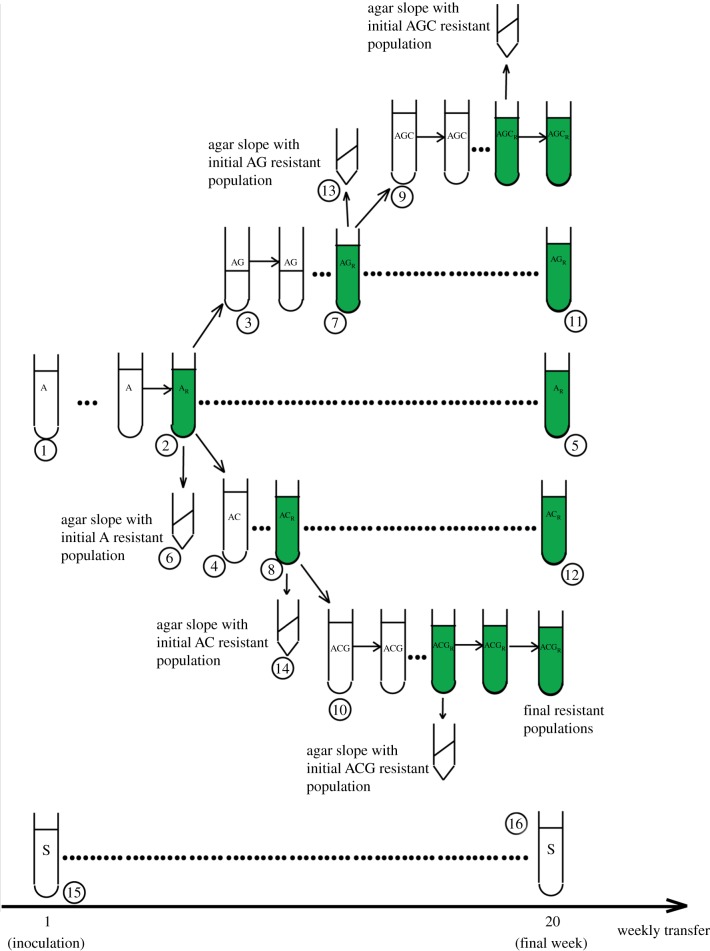Figure 1.
Schematic of the selection procedure for populations initially selected in atrazine. A population in primary exposure to atrazine (A)1 evolves resistance (AR)2, and 125 000 cells are transferred to culture tubes containing the secondary herbicides glyphosate (AG)3 or carbetamide (AC)4. The population is also maintained in atrazine for the duration of the experiment (AR)5. Initial resistant populations are preserved on BM slopes solidified with agar by transferring 200 µl of the population upon evolution of resistance6. When populations evolve resistance to secondary herbicides (AGR7 or ACR8), 125 000 cells are transferred to culture tubes containing the tertiary herbicide (AGC9 or ACG10). The population is also maintained in the secondary herbicide for the duration of the experiment (AGR11 or ACR12) and the initial double resistant populations are transferred to agar slopes as described above13,14. Source populations (S)15 are propagated weekly and used for immigration treatments when necessary. Source populations cultured in BM over the course of the experiment are termed ‘contemporaneous source populations’16 and are used in all final assays as controls. (Online version in colour.)

